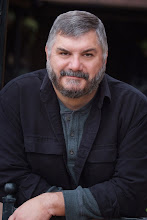This evening after the workshop, I headed uptown the Drama Book Store on 40th street and bought some new scripts then headed out to buy gifts for Eli and Callista (No coffee mugs or T-Shirts but I did get my magnet!)
I grabbed a quick bite for dinner and then headed off to see
Sessions, a new musical at the Algonquin Theatre that is being Stage Managed by Lara Maerz, one of the best SM's I have ever worked with (and one of my former students from TCU I am proud to say.)
The musical is about a therapist and the sessions he has with this clients. From their website:
Dr. Peter Peterson listens, advises and tests his patients. What good therapist wouldn’t? Particularly when your group includes:
a bickering marriage just won’t go away, a rich kid who found his voice in Bob Dylan, a reluctant man who has longed for the same woman for 15 years, a young woman who has spent so much time in therapy she might get out, a billionaire who finds no solace in his money, a strong willed woman with a dark secret, and a provocative siren in high heels...
At once a drama and a comedy with poignant and hilarious moments alike, Sessions is a new musical for a modern generation. After all, couldn’t we all use a little therapy?
The show was fun and had a very talented cast including Robert Newman as Dr. Peterson. (I guess he is a big soap star. His bio says he has just celebrated his 28th year on the longest running show in the history of broadcast, CBS’s
Guiding Light. )
I was joined on this outing with two more former students from TCU, John and Erin Patrick. After the show we all went out for drinks and laughed about the good times we had in Fort Worth.

On m way home, I found that there was an Apple store only five blocks from my apartment so I know where I am going Friday Night!



